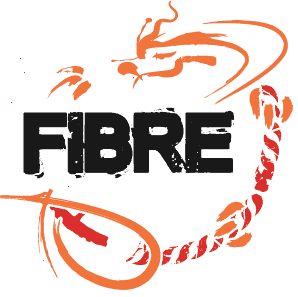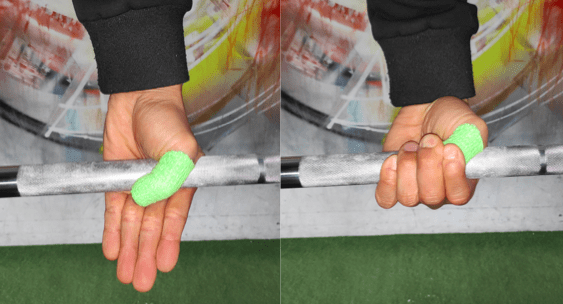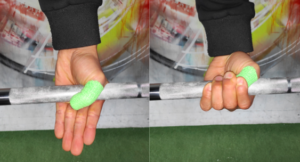The Hook Grip
A weight lifting grip style that you keep hearing so much about, heard about or just learnt and probably not a fan off. The hook grip was thought to be more of a weightlifting style grip, but now we’re seeing more athletes in the sport of CrossFit, functional fitness and gym sessions.
The hook grip is a useful skill for every strength athlete to practice and it’s useful. In this article, we’re going to cover how to hook grip, the benefits that can come along with this grip style, and two drawbacks that should be acknowledged.
How to Hook Grip
As the name suggests, the hook grip creates a natural hook of the hand for lifting purposes. The thumb, index, and middle finger all work together to create what feels like a natural lifting strap.
- Step 1: Press the area between the thumb and index finger (webbing) into the barbell.
- Step 2: Wrap the thumb fully (first) around the barbell. Thumb connects with the bar.
- Step 3: Wrap the index and middle finger over the thumb.
This grip style is so secure because the fingers wrap around the thumb protruding off the barbell, which then prevents you from throwing the bar out in front of you before you attempt a lift when your grip is fatiguing.
Unfortunately, the length of your fingers play a role in the hook grip. The size of men’s and women’s bars are standard and some may struggle to get this grip in. All you may be able to manage would be the index finger and third finger over the thumb and that would be enough.
Benefits of Hook Grip
-
Competition or Workout Reps
The first and largest benefit that comes with using the hook grip is how secure it is. After getting used to it, the hook grip is virtually as secure as the mixed grip. In workouts that have multiple reps which can be fatiguing, the hook grip will ensure that you will always have a good secure grip on the bar, allowing you to continuously work through your workout or secure that heavy lift.
-
Multiple Uses
This grip style can be used with almost all lifting styles. You can use it for deadlifts, cleans and snatch. As you get to a heavier lift with a barbell, you will find that a hook grip allows you to lift them without your grip giving out, which is usually the achilles heel of most lifting sessions and an over pumped forearm. Unlike the mixed grip which can be used only for deadlifts, you can use the hook grip in most barbell workouts.
-
Upper Body Balance
Mixed grip is fantastic at keeping the bar secure during heavy deadlifts, but using this grip for multiple years, one problem that can arise from excessive use of a mixed grip is upper body symmetry. With on grip that is open and the other over, the shoulder position changes and the muscle activation across the slings (myofascial slings) are loaded differently and can cause muscular imbalances.
The Hook grip is great because it eliminates any chances of upper body asymmetries, as both sides of the body will have the ability to pack evenly. Double overhand to hook grip is a seamless transition that will help keep mechanics consistent. Besides, training with the hook grip will be a transferable skill/grip to use in all your major lifts.
Drawbacks of The Hook Grip
Like with anything in the world that’s great, the hook grip does come with a couple drawbacks.
Getting Used to It
The hook grip is fairly uncomfortable when first starting out. Normally, athletes will experience mild pain on the thumb due to the pressure the barbell places on it and sometimes even joint soreness as the barbell is now pulling on the joint. This will become a norm, the only way around it is to continue to do more work with the hook grip and the only other way to reduce the soreness is to wrap the thumb up with tape. (Get your tape from the box, ask your coach about it)
It’s going to be uncomfortable and a little painful. But, it gets better, and as your lifting experience increases, the discomfort in the thumbs decrease, the joy of you lifting the bigger lifts just overshadow the slight discomfort that you will feel.
Over Stretching Forearm Fascia
Over time you will feel a tight forearm similar to a tennis or golf elbow that comes and goes. A lot of times this is attributed to multiple reps with load completed with the hook grip in the rack. And if you do not release the hook grip in the rack or when the barbell is overhead, it can cause excessive stretch onto the fascia (muscle glove) in your arms.
One way to counter this is to release the hook grip when you transition it to the rack or when the bar is overhead. Simple as that. And then you will have to learn to catch the bar into a hook grip as the bar is coming down. Some techniques your coach can teach you.
In Summary
The hook grip is a great method for a secure grip on barbells and dumbbells. It’s a grip style that can be used by every type of strength athlete and it is useful in competition and to cycle through your repetitions quickly. After you get over the uncomfortableness, the amount of goals and PBs you can potentially crush will be endless.





